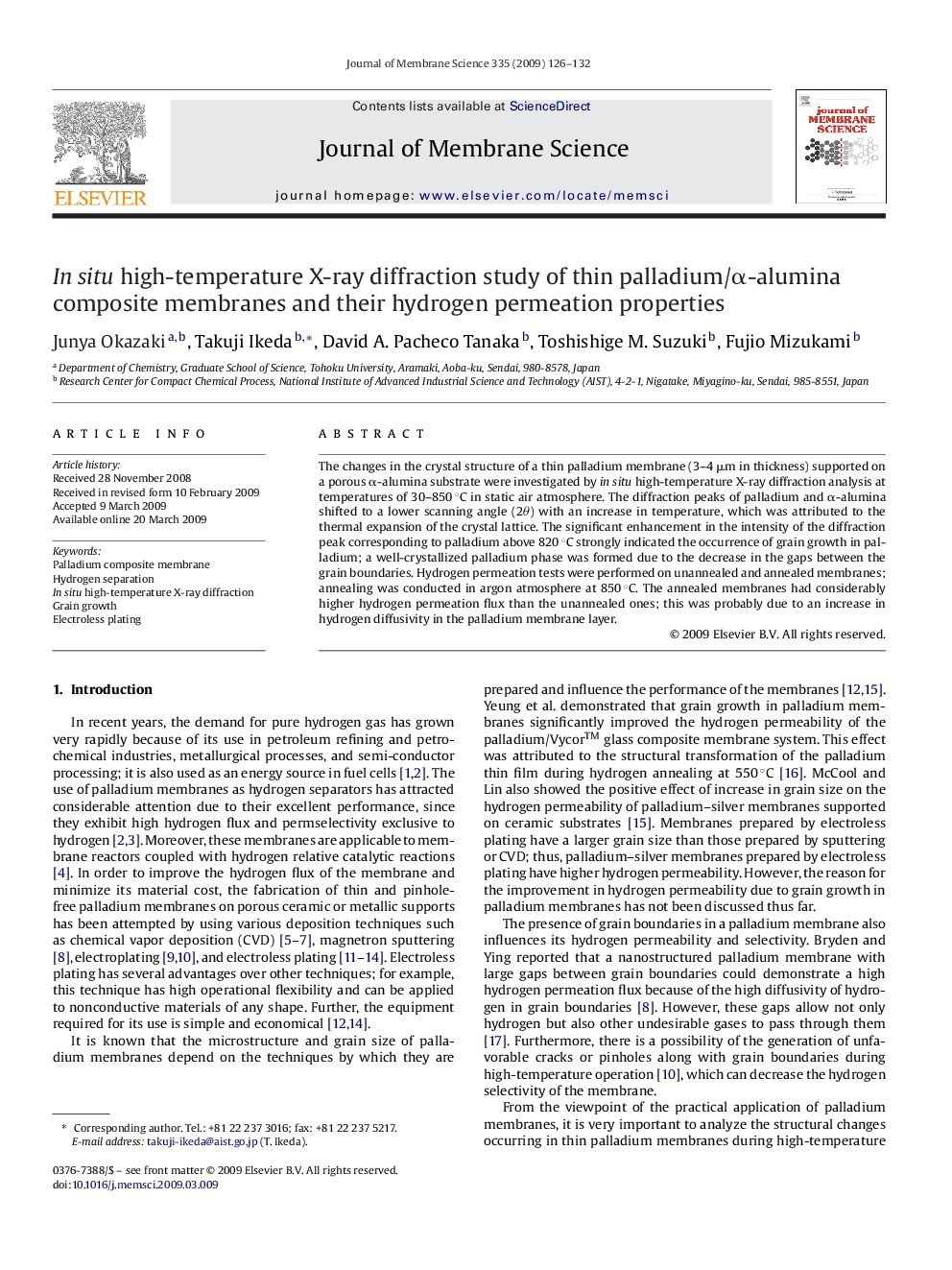| Article ID | Journal | Published Year | Pages | File Type |
|---|---|---|---|---|
| 637097 | Journal of Membrane Science | 2009 | 7 Pages |
The changes in the crystal structure of a thin palladium membrane (3–4 μm in thickness) supported on a porous α-alumina substrate were investigated by in situ high-temperature X-ray diffraction analysis at temperatures of 30–850 °C in static air atmosphere. The diffraction peaks of palladium and α-alumina shifted to a lower scanning angle (2θ) with an increase in temperature, which was attributed to the thermal expansion of the crystal lattice. The significant enhancement in the intensity of the diffraction peak corresponding to palladium above 820 °C strongly indicated the occurrence of grain growth in palladium; a well-crystallized palladium phase was formed due to the decrease in the gaps between the grain boundaries. Hydrogen permeation tests were performed on unannealed and annealed membranes; annealing was conducted in argon atmosphere at 850 °C. The annealed membranes had considerably higher hydrogen permeation flux than the unannealed ones; this was probably due to an increase in hydrogen diffusivity in the palladium membrane layer.
